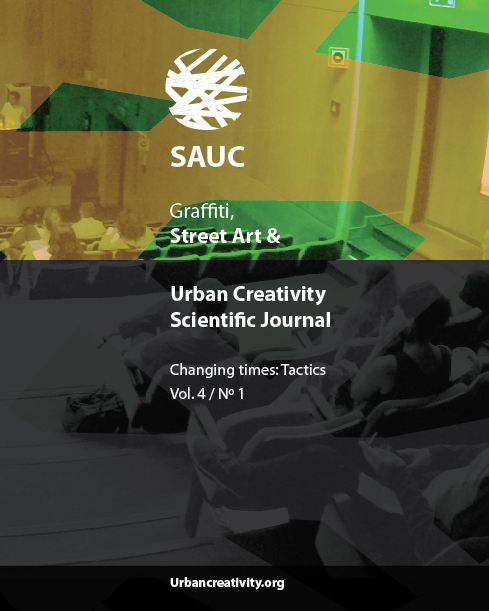Sustainable Graffiti Management Solutions for Public Areas
DOI:
https://doi.org/10.25765/sauc.v4i1.122Keywords:
Graffiti Management, Graffiti Countermeasures, Resource Efficiency, Public Areas, Sustainable Urban PlanningAbstract
Towards advancing sustainable graffiti management solutions for public areas, this article investigates the efficacy and socio- ecological effects of a range of contemporary graffiti management tactics. In addition to finding that reactive management tactics (e.g. painting over graffiti, chemical-based graffiti removal, and anti-graffiti coatings) are largely ineffective at deterring graffiti vandalism in public areas, it is shown that reactive management efforts also entail both short- and long-term environmental risks. Moreover, a comparison of reactive and proactive management tactics (e.g. landscaping techniques, green walls, community murals, legal graffiti spaces, and public art workshops) indicates that the cumulative environmental effects of reactive tactics are significantly more detrimental to human health and local ecosystems. Accordingly, it is recommended that local authorities focus on proactive graffiti management tactics for public areas. Finally, several best practice case studies of sustainable graffiti management are highlighted.
Downloads
Global Statistics ℹ️
|
269
Views
|
0
Downloads
|
|
269
Total
|
|
Downloads
Published
How to Cite
Issue
Section
License
Those authors who publish in this journal accept the following terms:
-
Authors retain copyright.
-
Authors transfer to the journal the right of first publication. The journal also owns the publishing rights.
-
All published contents are governed by an Attribution-NoDerivatives 4.0 International License.
Access the informative version and legal text of the license. By virtue of this, third parties are allowed to use what is published as long as they mention the authorship of the work and the first publication in this journal. If you transform the material, you may not distribute the modified work. -
Authors may make other independent and additional contractual arrangements for non-exclusive distribution of the version of the article published in this journal (e.g., inclusion in an institutional repository or publication in a book) as long as they clearly indicate that the work was first published in this journal.
- Authors are allowed and recommended to publish their work on the Internet (for example on institutional and personal websites), following the publication of, and referencing the journal, as this could lead to constructive exchanges and a more extensive and quick circulation of published works (see The Effect of Open Access).













